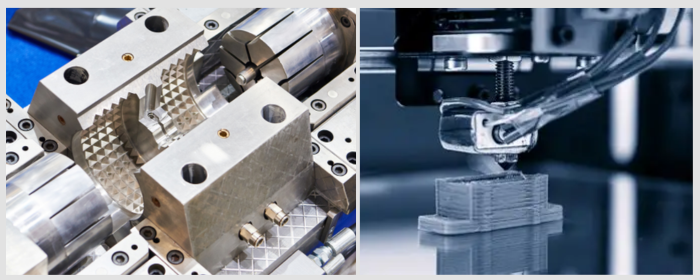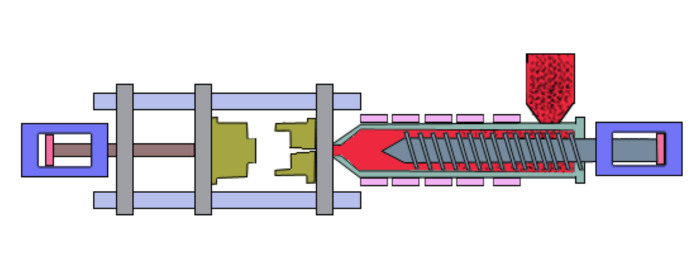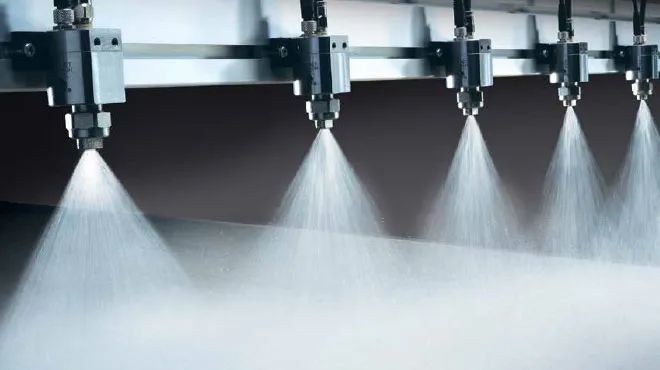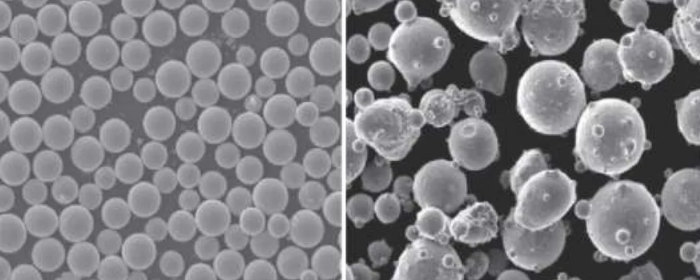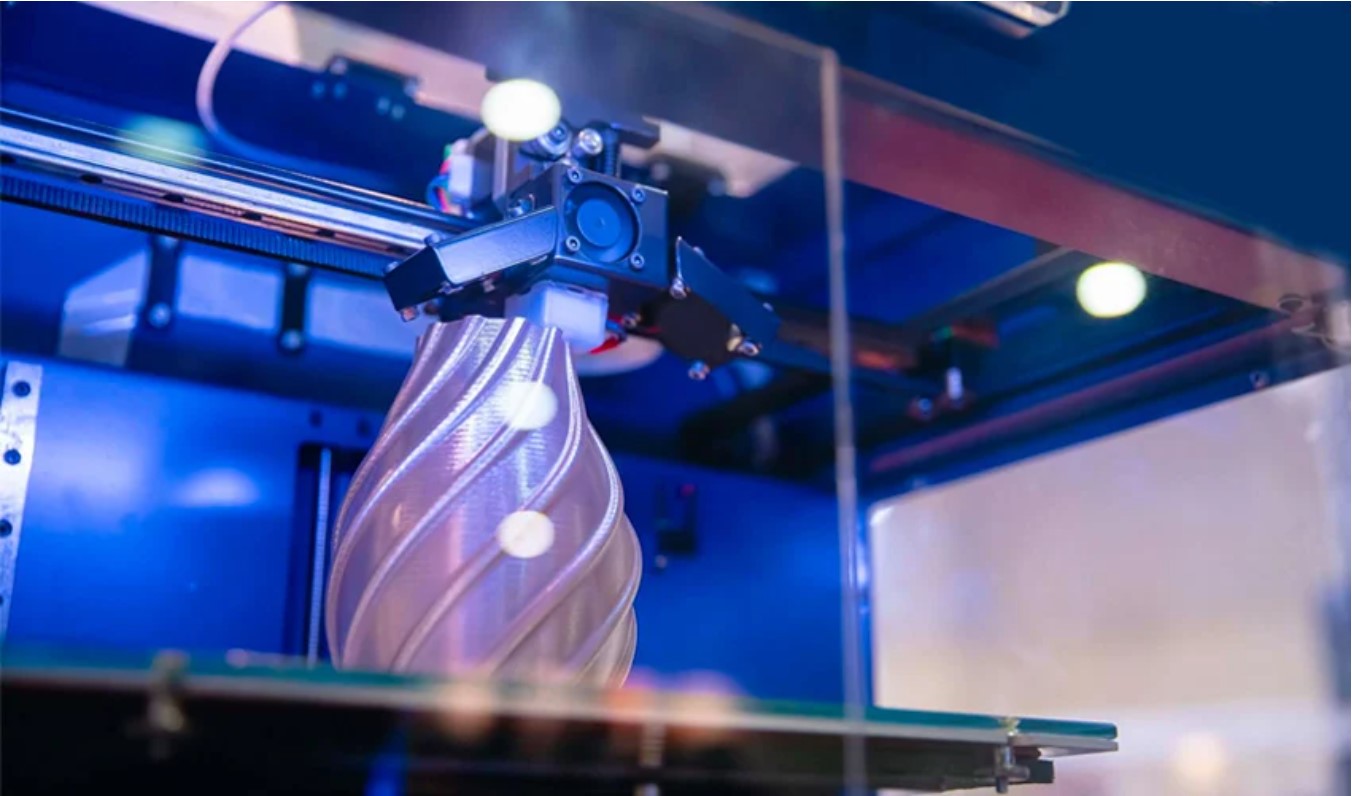

AlSi10Mg powder is an aluminum-based alloy powder designed specifically for additive manufacturing (such as 3D printing). Its main components are aluminum (Al), silicon (Si), and magnesium (Mg).
Table 1. Reference composition of AlSi10Mg powder from Stanford Advanced Materials (SAM).
.png)
Chemical properties
Physical properties
Table 2. Mechanical properties of AlSi10Mg
.png)
1. Printed Condition Properties (XY Direction)
2. Heat-treated Condition Properties (XY Direction)
As a metal powder specifically designed for additive manufacturing, AlSi10Mg powder offers several advantages:
AlSi10Mg powder is typically produced using gas atomization. This process results in a powder with spherical particles and good flowability. As a result, the powder can be spread evenly during the additive manufacturing process, avoiding issues like clumping and blockages.
Additionally, the melting point of AlSi10Mg is moderate, typically between 570–590°C, making it easy to melt and quickly solidify in processes like selective laser melting (SLM) and electron beam melting (EBM). This ensures stable bonding between layers.
Moreover, the addition of silicon reduces the thermal expansion coefficient, which improves dimensional stability and minimizes warping or cracking when printing complex geometries.
With aluminum as the primary component, AlSi10Mg is a lightweight material with a density of about 2.67 g/cm³. On the other hand, in its as-printed condition, it has a tensile strength of 430 MPa and a yield strength of 270 MPa. This makes it strong and lightweight, suitable for structural and functional parts.
.png)
Fig 1. Engineering stress–strain curves of AlSi10Mg[1].
The high silicon content results in lower shrinkage and higher dimensional stability during printing. This is a significant advantage when manufacturing complex geometries and intricate structures, as it helps avoid large deformations after printing.
AlSi10Mg is highly responsive to heat treatment. After T6 heat treatment, the tensile strength, yield strength, and ductility improve significantly. This allows the material’s mechanical properties to be adjusted according to different application needs, making it versatile across various fields.
AlSi10Mg has specific advantages over Al 6061 in additive manufacturing, particularly due to its composition, which is tailored for better flowability, casting performance, and thermal management during printing.
The many advantages of AlSi10Mg powder make it especially suitable for applications that require lightweight materials, complex geometries, and high precision.
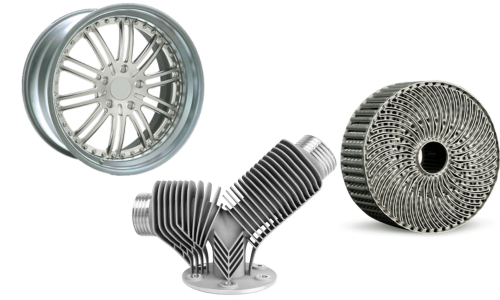
Fig 2. aircraft components
AlSi10Mg’s lightweight and high-strength characteristics make it popular in aerospace. It is often used to manufacture aircraft components, such as structural parts, brackets, and lightweight components with complex geometries. These parts help reduce aircraft weight and improve fuel efficiency, while maintaining high strength and durability.
In addition, since aircraft are often exposed to harsh environments (such as high temperatures and humidity), the corrosion resistance of AlSi10Mg plays a vital role. This makes it suitable for producing aerospace components that require both strength and corrosion resistance.
AlSi10Mg is commonly used to manufacture engine parts such as cylinder heads, intake manifolds, pistons, and other internal components. Its excellent thermal conductivity helps dissipate heat from the engine while reducing overall weight, improving fuel efficiency.
In chassis structures, brackets, and suspension systems, AlSi10Mg's high strength and lightweight properties help reduce vehicle weight while maintaining structural stability, enhancing the car’s performance and handling.
Additive manufacturing allows for highly customized medical devices tailored to specific patient needs and anatomical structures, enhancing treatment outcomes. Using AlSi10Mg, personalized medical implants, such as bone scaffolds and dental implants, can be produced.
In addition, AlSi10Mg is used to produce high-strength, lightweight surgical tools, making it a versatile material in the medical field.
In industrial production, AlSi10Mg is used to create complex molds and tools. Particularly in additive manufacturing, it enables rapid prototyping and precise manufacturing of intricate geometries that traditional processes cannot achieve. Its high hardness and wear resistance make it ideal for tools and molds that require durability over time.
AlSi10Mg is also used in 3D printing components for manufacturing equipment and automated systems, especially in applications requiring precision and load-bearing capacity.
AlSi10Mg’s excellent thermal conductivity makes it widely used in consumer electronics, especially for manufacturing heat sinks, thermal plates, and enclosures for smartphones, laptops, and other electronic devices. These devices require efficient heat dissipation while maintaining lightweight and strong structures, and AlSi10Mg fits these needs perfectly.
In summary, AlSi10Mg powder is a versatile aluminum-based alloy tailored for additive manufacturing. Its lightweight, high strength, and good thermal properties make it ideal for aerospace, automotive, medical, industrial, and consumer electronics applications. Its excellent printability and adaptability to heat treatment further enhance its potential in various demanding fields.
Stanford Advanced Materials (SAM) is dedicated to the research and development of spherical powder technology. We supply a variety of 3D printing metal powders, refractory metal powders, titanium, aluminum, stainless steel, cobalt chrome, nickel, copper, etc. SAM provides AlSi10Mg powders with particle sizes from 1-100 microns. If you are looking for high-quality additive manufacturing materials, please get a quote.
[1] Van Cauwenbergh, Pierre & Samaee, Vahid & Thijs, Lore & Nejezchlebová, Jitka & Sedlák, P. & Ivekovič, Aljaž & Schryvers, Dominique & Hooreweder, Brecht & Vanmeensel, Kim. (2021). Unravelling the multi-scale structure–property relationship of laser powder bed fusion processed and heat-treated AlSi10Mg. Scientific Reports. 11. 10.1038/s41598-021-85047-2.

